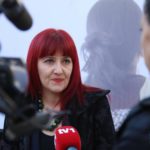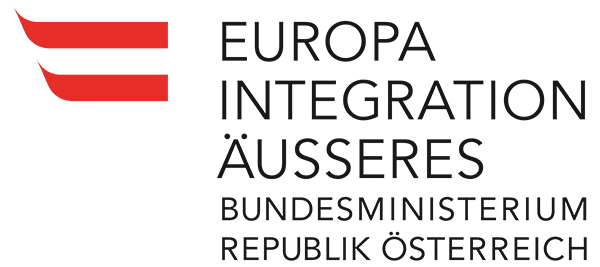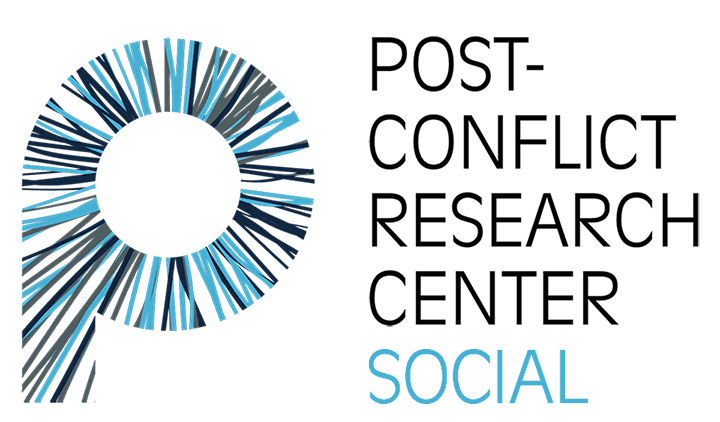
“Lessons from the past can improve our future, but we must be willing to teach others and be good students.”
This was a message from the “Lessons From the Past For the Future,” a conference held on the occasion of International Holocaust Remembrance Day. The conference was jointly organized by the Post-Conflict Research Center (PCRC), the Educators Institute for Human Rights (EIHR), and the Civil Peace Service Forum (ForumZFD) of Bosnia and Herzegovina (BiH). The conference addressed the impact of the manual Holocaust and Peace: Lessons From the Past For the Future, which has been used in primary and secondary schools in Sarajevo Canton for two years.
“The Holocaust is one of the most horrific and darkest events and periods in world history. At the root of the Holocaust is the initial action, the dogma, which rests on the dehumanization of society,” said Naida Hota Muminović, Minister of Education of Sarajevo Canton.
Although the world resolutely denounced mass atrocities after the Holocaust, genocides were committed in Srebrenica and Rwanda. Even today we are witnessing terrible crimes and grave breaches of the Universal Declaration of Human Rights around the world.
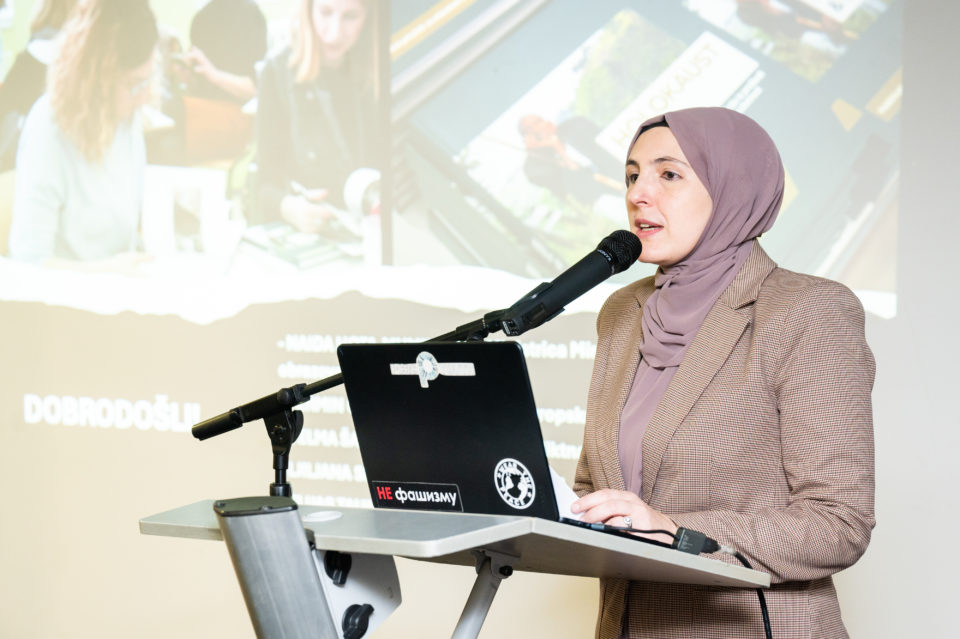
“May the lessons of the past really improve our future. May education be the guarantee that this improvement has taken place. I firmly believe that we can achieve this together,” Minister Hota Muminović said.
Elijas Tauber, advisor for culture and religion of the Jewish community in BiH, recalled that before the Holocaust, 14,500 Jews lived in the country. Of these 12,500, lived in Sarajevo, which then represented 20 percent of the city’s population.
“These were intellectuals who simply disappeared. We don’t have a many people who remained in order to pass on their knowledge – doctors, painters, professors, and so on. When we talk about these people, it is important to say their names, where they lived, where they worked, because with their disappearance, part of the identity of the city of Sarajevo also disappeared,” said Tauber.
The Culture of Memory as a Lesson for the Future
Ljiljana Siničković from ForumZFD BiH said that while there are many lessons we must learn from the Holocaust, the most important are those that teach us how to prevent new atrocities, recognize early warning signs, causes, and the language used. She emphasized that without a culture of memory, we cannot learn lessons for the future.
“While we find ways to teach new generations to recognize hatred that endangers others, let’s focus on the value of human rights. We need to awaken empathy and understand the past through facts and in ways that do not incite revenge, and to counteract hatred and violence. It is not an easy task, and it puts a burden on each of us,” Siničković said.
The promotion of peace and reconciliation is needed more than ever in BiH, according to Fermin Cordoba, the senior political advisor at the Delegation of the European Union to BiH. He noted that in order to arrive at the truth, the verdicts of domestic and international courts cannot be ignored, adding that the real question is how much empathy there actually is in BiH.
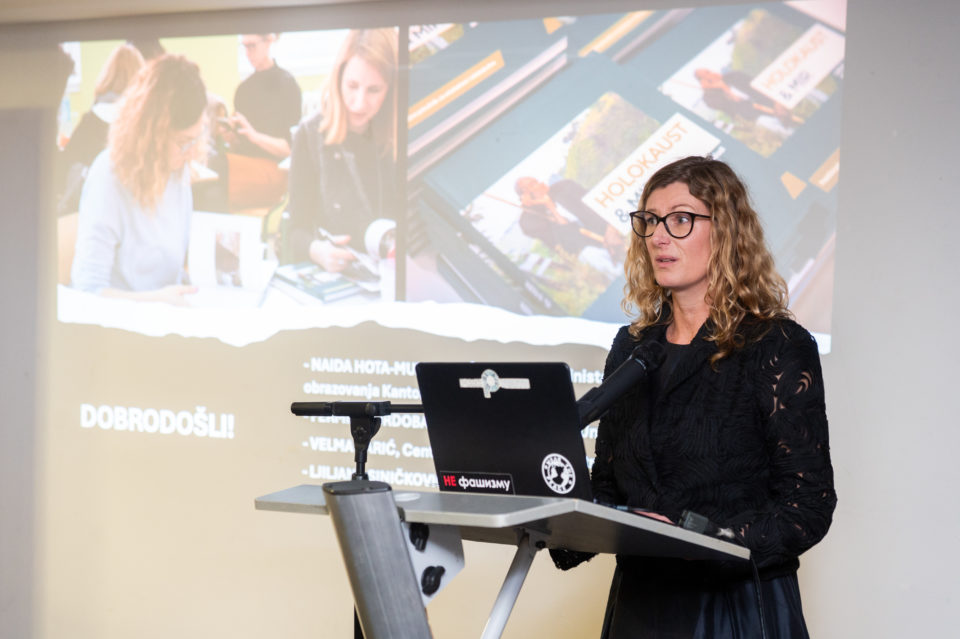
“Are we empathetic when we read history books and ask ourselves: ‘OK, it was like this for me, but how was it for others?’ Without empathy, the path to truth and reconciliation will be extremely difficult,” said Cordoba.
To support teaching, educational resource development, and research on history, conflict, and violence—as well as efforts to prevent and combat revisionism and denial—PCRC, ForumZFD, and EIHR, in collaboration with professors and educators from across BiH, developed a didactic guide for teachers titled Holocaust and Peace: Lessons From the Past For the Future.
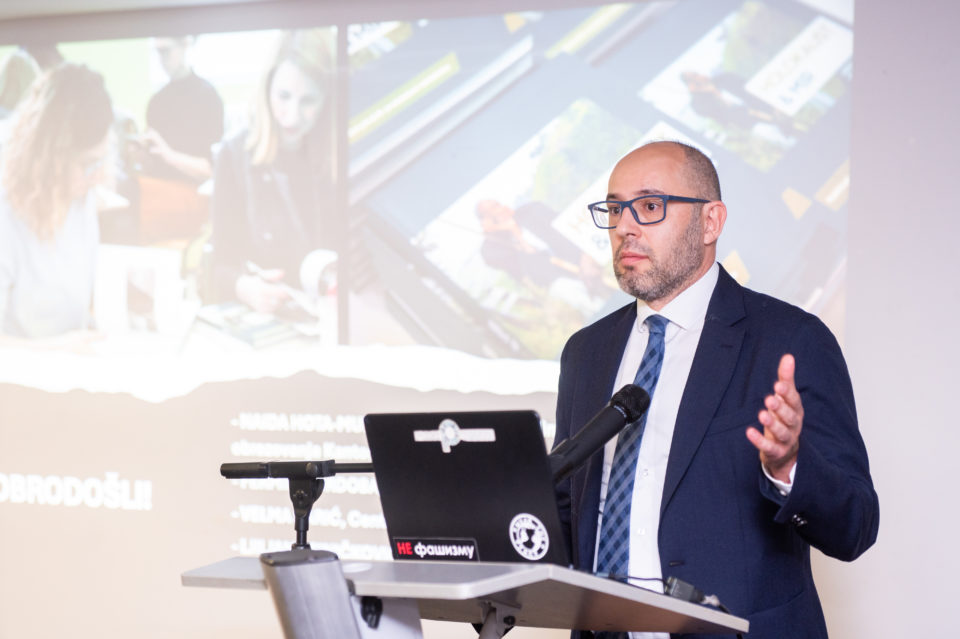
Velma Šarić, the founder and president of PCRC, explained that they worked with their partners on the manual for ten years, expressing special thanks to the professors and teachers who created it. The manual consists of four modules, with 11 lessons covering various topics, including human rights, moral courage, memorialization, art, literature and language.
“This year we mark 30 years since the genocide in Srebrenica, and these topics and lessons from the past are really very important for prevention and to build a better future,” said Šarić. She also expressed her gratitude for the Mothers’ Movement of the Srebrenica and Žepa Enclaves, whose representatives attended the conference.
Building Empathy
Professor Đuldina Kurtović, who teaches philosophy and logic at the Third High School Gymnasium in Sarajevo, also worked on the manual. In class, she covered the section related to the stories of Ordinary Heroes, a PCRC project highlighting the moral courage of people who risked their lives to help those of other ethnicities during the war and genocide in BiH and beyond.
“What surprised me in the remarks and discussion with the students is that together, we came to the conclusion that these topics are very important. Moral courage concerns every human being. It is inherent in every human being and is not reserved only for individuals,” said Kurtović.
She added that through the lessons and stories about Ordinary Heroes, the students experienced catharsis and developed empathy, regardless of their identity or background. They also expressed a sense of fear, realizing that the horrors of war can happen to anyone.
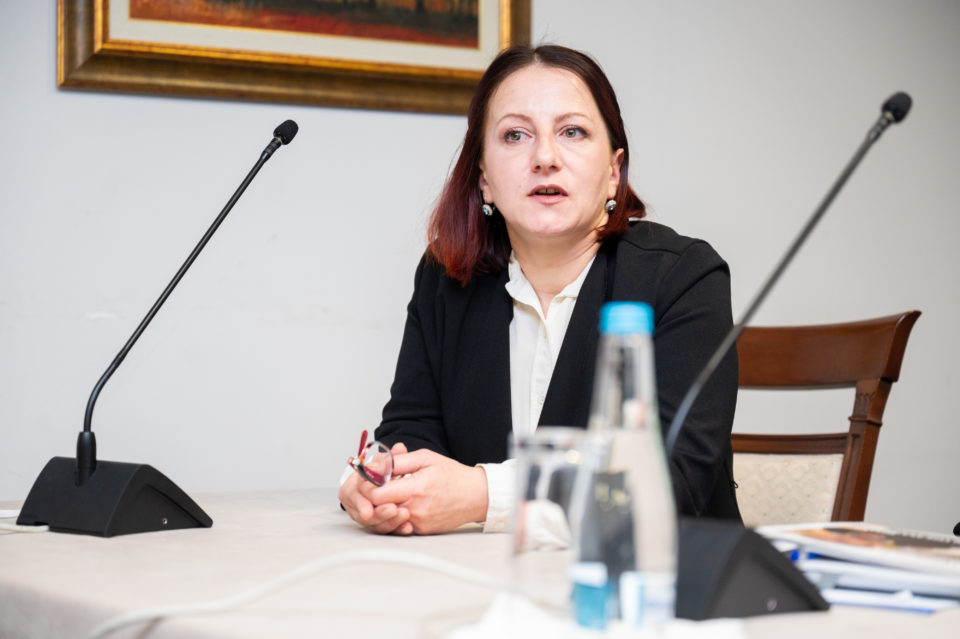
The stories in the manual are just an idea and an incentive for teachers to adapt models, strategies, techniques, and methodologies to their own needs, and to further develop and research them, according to Melisa Forić Plašto, a senior assistant at the University of Sarajevo Faculty of Philosophy.
She explained that the methodology for teaching about the Holocaust is highly applicable to teaching about genocide and all mass atrocities committed in BiH and around the world.
“We have to be aware that our students are interested in this, but we must also be prepared to prioritize peace in teaching about these topics. It must be rooted in the idea of promoting respect for others and promoting peace for the future of our society,” said Forić Plašto.
The manual is designed so that certain segments can be used in various classes, such as language, arts, and human rights. Milica Jošić-Milinović, a senior assistant at the University of Banja Luka Faculty of Philology, explained that a comprehensive workshop is not necessary. She added that the materials can be used even without internet access, taking into account the technological capacities of classrooms.
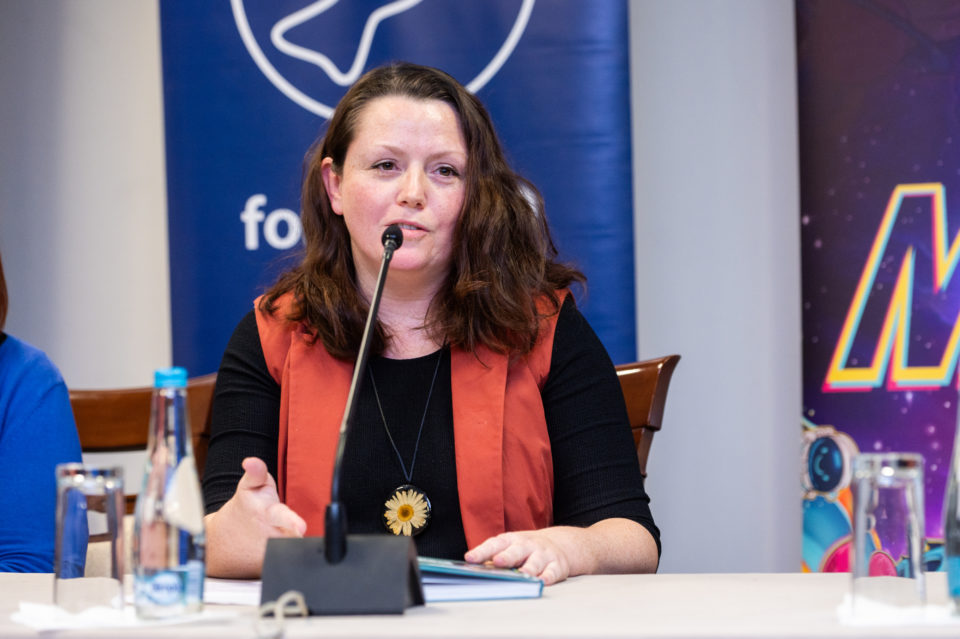
“The idea of the manual is its practicality,” emphasized Jošić-Milinović, who worked on the language and literature workshop, with the main goal of giving a voice to objects and places that survived the horrors of war. “The focus was on the untold stories from the past for the future, giving a voice to places that cannot speak,” she added.
The Fight against Marginalization and Stereotypes
One lesson in the manual focuses the Roma people—the largest marginalized group in BiH. It highlights the project “On the Margins,” carried out by the Organization for Security Cooperation in Europe (OSCE) in collaboration with PCRC. This project includes a photography exhibition and a photo book aimed at challenging negative stereotypes about the Roma community in BiH.
Speaking on behalf of the OSCE Mission in BiH, Glorija Alić described their years’ of working together with Roma communities in the fight against marginalization, stereotyping, and discrimination. However, she emphasized that the lives of Roma people remain difficult, as most do not have access to employment, adequate accommodation, schooling for their children, and similar necessities.
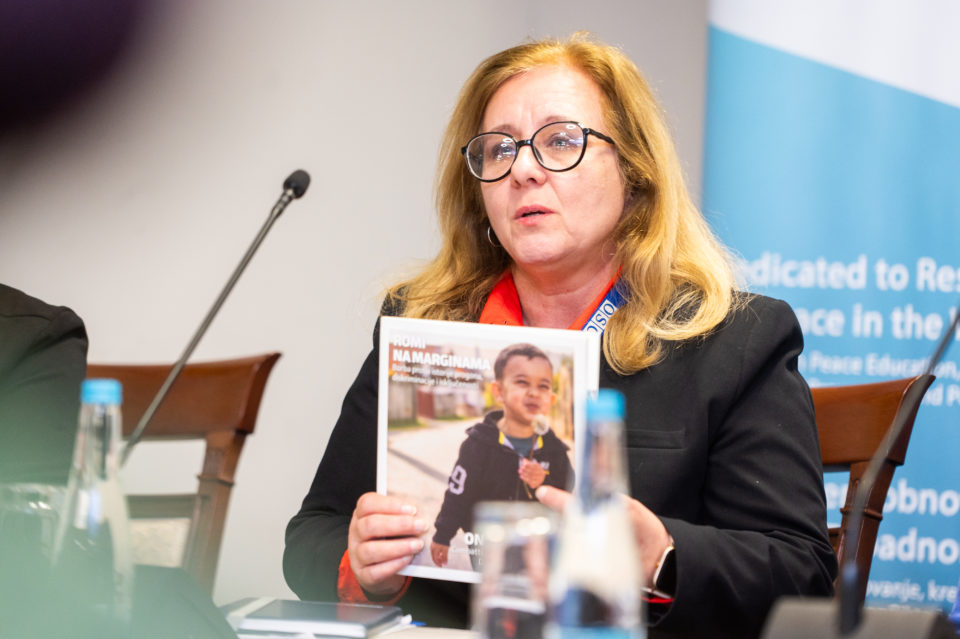
“The fight against prejudices concerning the Roma population is the task of all of us individually—not just international and non-governmental organizations and institutions, but all of us. This book is one step, one tool, and I hope that you, as participants in the education system who have the most contact with families and children, will use it to try to break these stereotypes among young people,” said Alić.
Selma Karović, a professor of civic education, democracy, and human rights at the Malta Elementary School in Sarajevo, stated that she primarily incorporated lessons from On the Margins into civic education and the course Society/Culture/Religion. Her goal was to encourage students to challenge the prejudices they often internalize from their surroundings, citing the prevalence of prejudice embodied in phrases like “Don’t go there, the gypsies will kidnap you,” which children often hear.
In addition to this lesson, Karović highlighted the Ordinary Heroes section, noting that the stories of ordinary but great people, who helped others—hid them, brought them food, and the like in a variety of situations—were also very important to her.
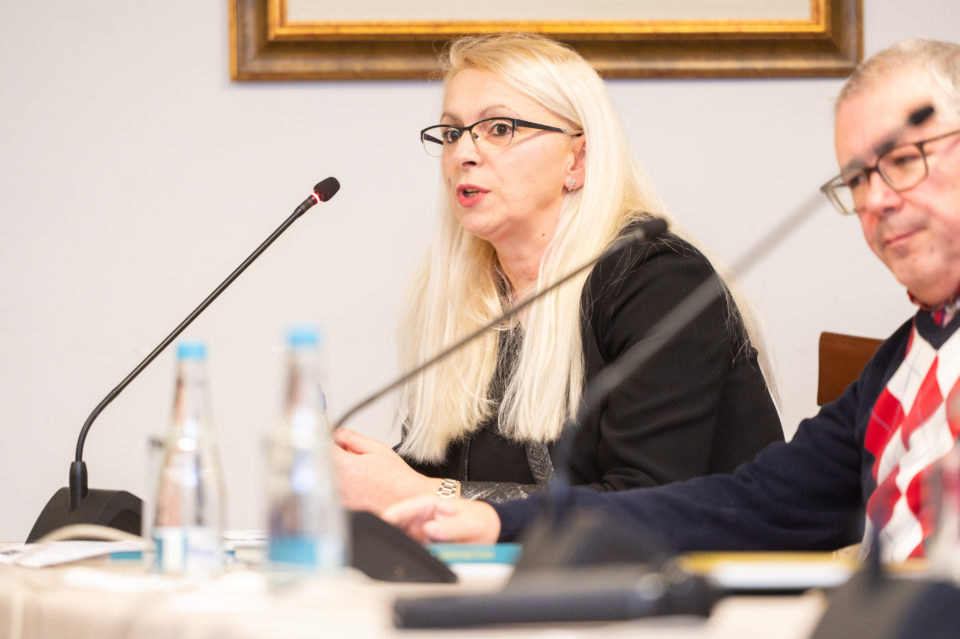
“Not only civic education, but in all courses, we must focus on moral responsibility and morally encouraging students toward basic human values. They should help those who are in trouble, those whom society considers less valuable at a given moment,” Karović pointed out.
“We need to Talk and Think”
In 2022, Holocaust and Peace: Lessons from the Past for the Future received support from the Institute for the Development of Pre-University Education of the Sarajevo Canton. As Nermina Uzejnovski, head of the Cabinet of Directors, explained, following a meeting with project partners, the decision was made to “shift towards supporting peace.” A year later, workshops were held with teachers from most schools in Sarajevo Canton, and the Institute continues to support and monitor the manual’s application.
Samir Hajrulahović, professor of history at the Sarajevo Medical High School, said that studying the Holocaust and peace education are more necessary than ever. He finds the historical section of the manual particularly valuable, given that students know more about Auschwitz and what happened in Nazi Germany than they know about what happened in BiH during the Holocaust.
The manual was also very helpful to Adisa Sokolović, a history teacher at the Isak Samokovlija Elementary School in Sarajevo.
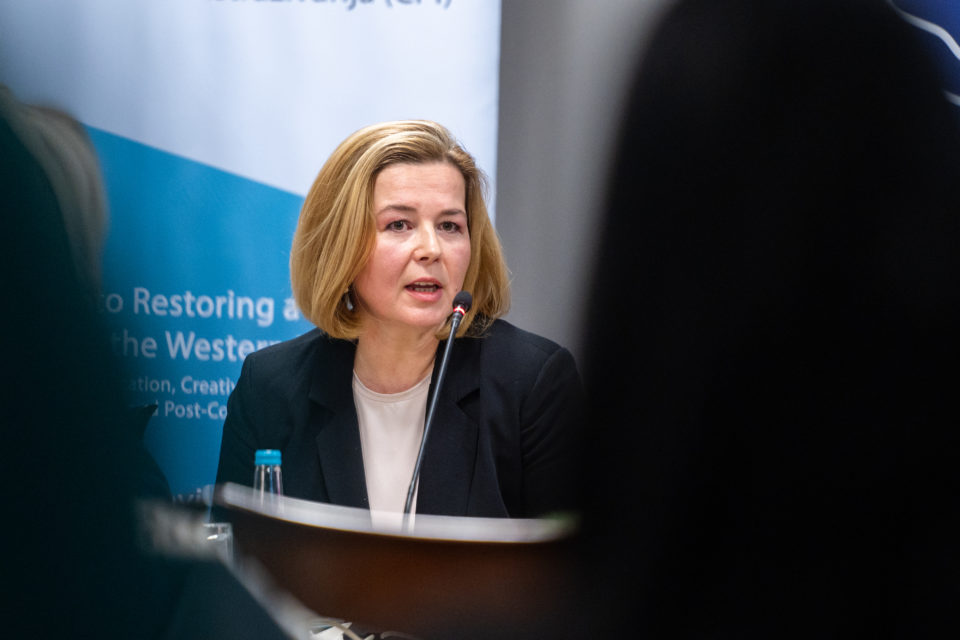
“I was in a quandary as to how to convey all of this to young people and present them with something they could understand in just 45 minutes, because these are really sensitive things,” said Sokolović. She explained her interdisciplinary approach to teaching is mirrored by the manual itself, adding that much of her focus is on Bosnian language and literature, where she considers identity preservation a very important topic.
In addition to photos, videos, testimonies, and the like, Sokolović emphasized the value of visiting memorial sites.
“Sometimes when I start with the topic of the Holocaust or when I finish it, I go with the children to the Jewish Museum, where they can see a part of the Holocaust, the suffering of the Jews of Bosnia and Herzegovina,” added Sokolović.
Kada Hotić, the vice-president of the Movement of Mothers of the Srebrenica and Žepa Enclaves, said that the culture of memory must never be silenced: “We have to talk, to discuss, to think about it.”
“Here we have our professors and teachers who will help society to remember, and not to forget. The memory of the Holocaust and genocide is a guide for the future, for people to judge whether it is right to do that, whether a people should be eliminated from the earth, who has the right to decide which people live, what human values are… We are all flesh and blood. Everyone has the same needs,” said Hotić.
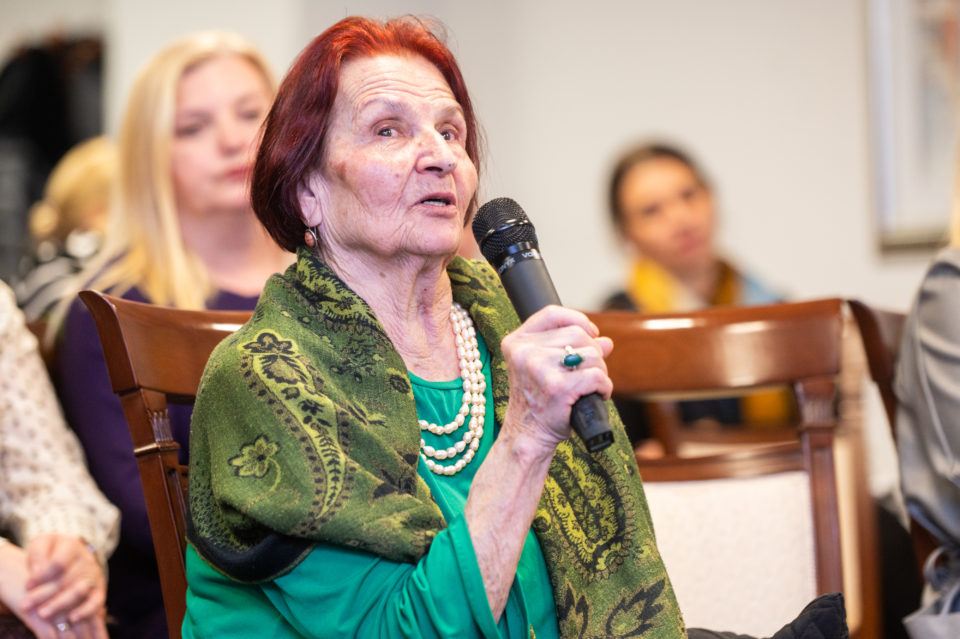
Along with learning about the past and visiting memorials, educators agreed that it is crucial to develop a culture of peace, solidarity, human rights, and values across all disciplines in order to be good students of history and teachers of life lessons.



